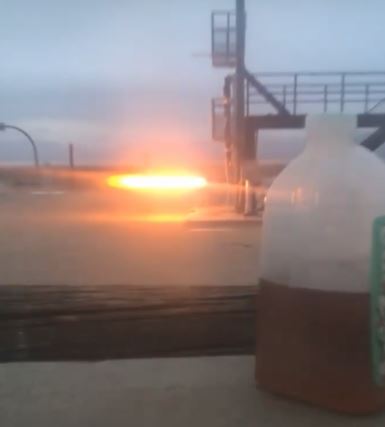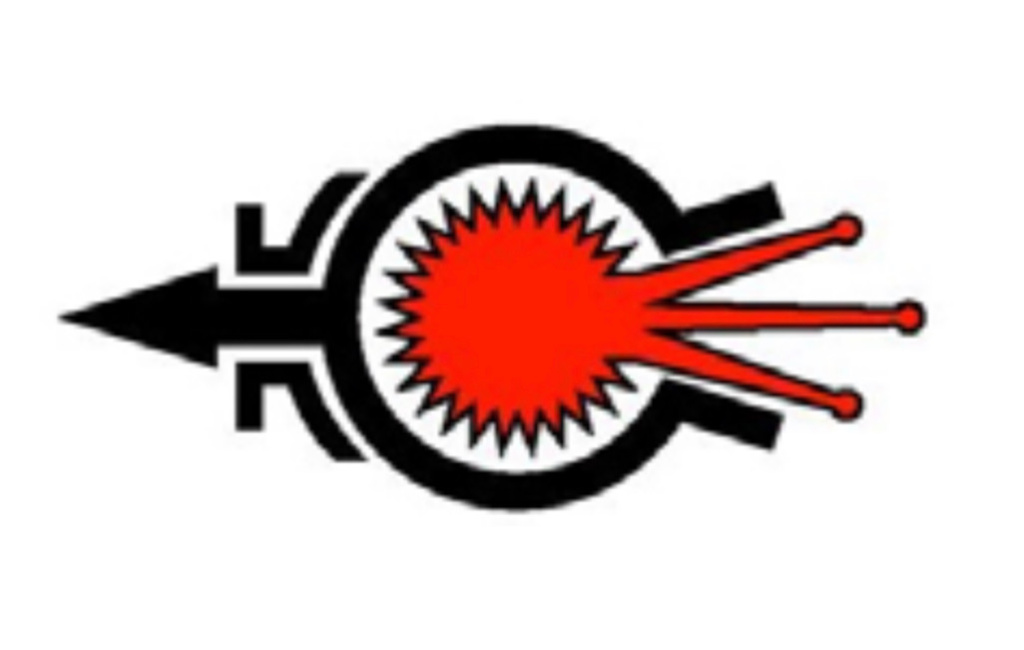by Dave Nordling, RRS.ORG
The RRS held a launch event on Sunday, March 1st, 2020, at the Mojave Test Area. It was a brisk morning with steady winds that occasionally slowed enough for a safe launch.
This launch event was originally for a university static fire and a few member projects. The university had to reschedule but we had sufficient interest from our own projects so we held the event.

The weather was a concern with passing storms and rain predicted earlier in the week. But as often happens, the weather shifted for the better on launch day with winds staying low enough to launch most of our projects.

Wolfram has been working for a few years on his Gas Guzzler ramjet rocket. He is just now entering the first system flight tests to demonstrate the staging and recovery systems. He filled his ramjet with water in place of the gasoline to have a representative weight.


Wolfram was able to load his booster on to the 1515 rails with good alignment. His upper stage had some alignment problems due to using a different prototype for this initial flight. After some examinations on the pad, he pulled his rocket stages back to the Dosa building for internal adjustments to assure a clean fit between the booster and upper stage.


The next launch was Keith Yoerg’s high powered rocket, Charlie Horse. He used an I-350 Smoky Sam motor and had a dual-deployment system with a GPS tracker built in. The flight was smooth off the rails but the trajectory data seemed to show a steady wind pushing west to east. He reached an apogee of around 4000 feet. Recovery wasn’t a problem as his rocket landed just a hundred yards east of the RRS MTA.

Wolfram returned his rocket to the pad but accidentally dropped the second stage breaking a piece of the ramjet plastic cowl on the concrete below. With this significant disruption of the aerodynamic surface, he was forced to abort the flight and rework this part. He was also going to check some of the other parts in his assembly for this long-awaited first flight. It’s important to not rush a project and wait until all is ready for a successful flight.


The next flight was to be the hybrid rocket that Larry, Osvaldo and I have been working. The Contrails H222 motor was safely loaded from last month and after some improvements to the vehicle body for better parachute recovery functions, we felt we were ready.
The winds were still favorable so we proceeded with clearing the area and making our electrical connections back to the old blockhouse. With just a handful of people and the lightweight vehicle, the old blockhouse was sufficient for our operations that day.

The nitrous bottle was refilled from the prior week and the manifold was plumbed to the vehicle tank. With the opening of the nitrous bottle, remote operations could begin. The time of tanking the small 38mm H-motor tank was not precisely known, but was not expected to take very long given basic calculations of the available flow rate. As expected, the tank volume primed within 15-20 seconds. We waited a full minute as we were initially unsure of whether the full volume was filled with liquid. After spotting a jet of liquid escaping from the vehicle body vent, we were assured that the hybrid motor was ready to be ignited.
Osvaldo conducted the firing operation after a short five-count. The resistor and Pyrodex charge ignited after a slight delay for the resistor to heat up sufficiently. The motor seemed to reach full thrust quickly and leave the rail as expected from the thrust curves from this commercial motor.

The vehicle was spotted tumbling after leaving the rails leading us to believe the rocket was not properly balanced. More detailed calculations would have been beneficial, but from initial estimates and the heavier recovery system in the extended rocket body, it was believed the rocket would be stable enough.
Examination of Osvaldo’s high speed camera footage from the hybrid flight revealed the reason for the vehicle tumbling. Some of the frames show that the nitrous fill line remained attached to the rocket during launch and even after clearing the rails. The fill line did snap loose in the flight at some point, but it was supposed to completely sever at ignition. This imparted a significant torque to the vehicle leading to a tumbling and short trajectory back to ground.



Worse, in my rush to get the hybrid loaded on the rails and made ready for filling operations, I forgot to arm the recovery system. This is a classic mistake and one that I could have easily avoided.
At least, the other issues with the flight limited the distance the rocket travelled. The rocket was recovered just north of the 1010 launch rail still within the bounds of the MTA. The rocket landed on its nose breaking it and significant body tube damage was sustained. After disassembling the hybrid motor from the body, we opted to scrap the rocket body and rebuild a new one for the next flight. The fill and fire operations were successful and the equipment we built worked fine.


The Contrails H222 motor parts survived well. We were able to easily remove the motor assembly and disassembled the parts for inspection. The graphite nozzle showed very little ablation and will be reused. None of the parts had heat damage. The fuel grain didn’t exhibit much ablation as compared to the other unburned grains we had. The burn duration in flight seemed to be similar to what is shown on the thrust curve, but this should be reviewed against the flight footage.
More review of the flight footage will be necessary to better understand how the hybrid motor operated. We are considering changing the ignition method to use an electric match and maybe a shape charge that would better ignite the hybrid motor.
We are considering building a static testing rig for the hybrid motor to verify some changes we intend to try with the ignition. There will be more on this subject in later reports.


Larry Hoffing had built a custom composite solid rocket motor using a spent casing from a commercial solid motor. This simple end-burner grain also had a custom-made nozzle. Larry had suspended his experimental motor a length of metal piping threaded on our large adjustable box rails that is still undergoing refurbishment.

Unfortunately, Larry’s motor design was not successful and rapidly overpressurized scattering both end caps and propellant grain fragments across the desert floor. No fires resulted from this static firing failure and no serious damage was done to nearby structures used for this demonstration.

The last launch attempt was Keith Yoerg’s smaller model rockets using the tiny B and C motors. The winds became stronger as the day progressed and by that time sustained wind levels were too high for any launch particularly for such a small vehicle. These rockets would be saved for a later event and Keith began examining his Charlie Horse rocket and its camera footage.


It was a good day for the RRS to have a launch event exclusively for our member projects. We plan to hold more of these events for both universities and our membership very soon.





















